#areca palm tree
Explore tagged Tumblr posts
Text
Discover the Perfect Palm Tree Nursery Near You | JMC Landscaping
Explore our palm tree nursery near you and find a stunning selection of palm trees for your landscape at JMC Landscaping. With our expertise and commitment to quality, we provide a wide range of palm varieties, ensuring you'll find the perfect addition to your outdoor space. Visit our nursery today and let us help you transform your landscape into a tropical oasis.
Click to know more:
1 note
·
View note
Photo

Nearly Natural Artificial Triple Areca Palm Tree in White Planter
1 note
·
View note
Text
UV Resistant Artificial Plants
Welcome to Shajara, your trusted source for UV resistant artificial plants in UAE. We understand the importance of durable and long-lasting artificial plants that can withstand the harsh outdoor conditions, particularly the damaging effects of UV rays. Our collection features a wide range of UV resistant artificial plants, meticulously designed to retain their vibrant colors and lifelike appearance even when exposed to direct sunlight. These UV resistant artificial plants are crafted using advanced materials that offer exceptional protection against fading, discoloration, and deterioration caused by the sun's UV rays. Whether you're sprucing up your garden, patio, or balcony, our UV resistant artificial plants provide a perfect solution for adding greenery to your outdoor space. Enjoy the beauty of nature year-round without the need for constant maintenance or worrying about the damaging effects of the sun. Explore our selection of UV resistant artificial plants and create a stunning outdoor oasis that stands the test of time.
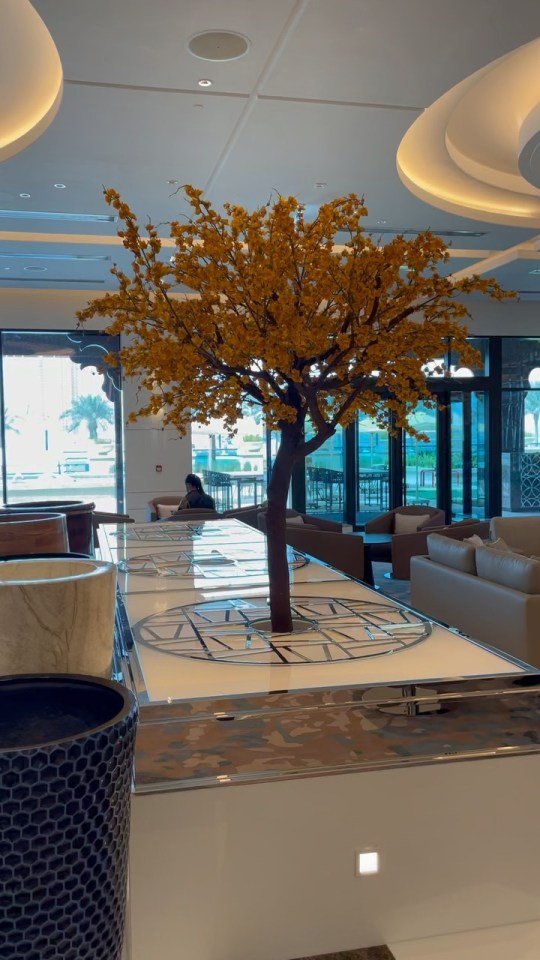
#areca palm#custom artificial trees#buy artificial plants#bespoke trees#artificial trees#bespoke artificial trees#buy plants online#artificial plants#fire resistant plants#green walls
0 notes
Text
Indoor Oasis: Unlocking the Beauty of Growing Palms at Home
Growing Palm Trees as Houseplants Palm trees have long been associated with tropical landscapes, sandy beaches, and lush environments. While they are typically found in outdoor settings, the appeal of palm trees has extended indoors, bringing a touch of exotic beauty to our homes. Growing palm trees as houseplants allows us to create our very own indoor oasis, transforming our living spaces into…

View On WordPress
#Areca palm (Dypsis lutescens)#Bamboo palm (Chamaedorea seifrizii)#houseplant#indoor tree#Kentia palm (Howea forsteriana)#Lady palm (Rhapis excelsa)#Majesty palm (Ravenea rivularis)#palms#Parlor palm (Chamaedorea elegans)#Ponytail palm (Beaucarnea recurvata)#Pygmy date palm (Phoenix roebelenii)
0 notes
Text
House Plant Asks 🪴
Aloe Vera: Have you ever had any serious injuries?
Golden Pathos: Have you ever won anything?
Snake Plant: If you could have any animal for a plant, what would it be?
Moth Orchid: Butterflies or Moths?
Peace Lily: What could you use most right now?
Basil: Favorite food?
African Violet: If you could travel anywhere, where would you go?
Jade Plant: Favorite crystal/gem?
Spider Plant: How do you feel about bugs?
Rubber Plant: What’s your favorite/least favorite texture?
Dumb Cane Plant: What’s the dumbest thing you’ve ever done?
Monstera Deliciousa: What’s your favorite mythical creature?
Rosemary: If you didn’t go by the name(s) you go by now, what name(s) would you choose?
Umbrella Plant: What’s your favorite weather?
Money Tree: If you had $1m to spend ONLY on yourself, what would you spend it on?
Lucky Bamboo: Is there anything you consider lucky/unlucky?
English Ivy: What language(s) do you speak/sign/write?
ZZ Plant: Favorite band?
Boston Fern: Favorite City?
Areca Palms: What’s your favorite climate/biome?
Fiddle Leaf Fig: Do you play any instruments/wish you could play any instruments?
Pilea: Have you ever jumped into a pile of leaves?
Bromeliad: What’s your favorite color?
Dragon Tree: Do you collect anything?
String of Pearls: What’s your favorite jewelry?
Croton: What’s in your ideal salad?
Chinese Evergreen: Do you have a favorite folklore?
Ponytail Palm: What’s your favorite hairstyle?
Oyster Plant: What’s your favorite sea creature?
Kalanchoe: Do you believe in any supernatural forces/cryptids?
Jasmine Plant: What’s your favorite scent?
Heartland Philodendron: What’s the best way to win your heart?
Cactus: Are you an affectionate person?
Silver Leaf Philodendron: What’s a silver lining you’ve found in life?
Polka Dot Begonia: If you had to wear only one pattern for the rest of your life, what would it be?
Black Velvet Alocasia: What’s your aesthetic?
Birds Nest Anthurium: What’s your dream house like?
Ficus Audrey: What’s your favorite season?
Homalomena Selby: What’s home to you?
Sweetheart Plant: Talk about someone you love
84 notes
·
View notes
Text
Namjooning - Namjoon & Grace

It was cute to watch Namjoon buzz his little socks off in the passenger seat of her car. He already had accumulated a list of plants that he thought would be suited for her apartment and for her needs, especially since she was going to be getting a cat soon. He had extensively researched local shops and suppliers, had done his own research into each plant and how it needed taking care of, which ones could survive on their own essentially and which ones would bloom lovely with the right amount of care.
When Grace had gone to Namjoon for some advice over what plants to get for her apartment (they literally lived in the same complex) and which ones wouldn’t be harmful to her future cat, she didn’t realise it would become a thing. She knew he loved plants, his little bonsai tree was proof of that and the amount of plants that used to live at the dorm as well under his care meant she was putting her trust in the right person.
So he had got his list together, found a trusted shop to go to and arranged with the owners for a private hour for them to buy plants. It had amused her greatly at how serious he was taking this.
After parking in the back and making their way to the main front door, it was clear that the shop in question was a plant lover's dream. Named the Gardener’ Wife, run by a gardener and his florist wife, it had been in Seoul for the past fourteen years. And it was clear they were going to be the experts in the field.
For Grace, she just showed her bank card and let them have it.
She found a cart full of Pothos, zanzibar gem, areca palm, spider plant for the cat, and so much more. Her apartment was going to look more like the garden shop than it was an apartment. But at least they were easy to look after and she would only have to give them a water when they needed it.
“Thank you so much,” Grace said as she took her bank card back. “Namjoon is going to have fun now trying to find the right home for all these.”
Namjoon blinked from where he had been looking at a handmade pot, small enough to fit in his hands but large enough to hold a plant. “Isn’t this cute?” he asked, holding up the pot for Grace to see.
“You’re cute,” she gave as a response and grinned when the dimples came out. “I guess we’ll have that as well.”
The pot found its precious place on Namjoon’s lap and all the plants were secured in the boot. It smelt like a garden nursery in the car, a mix of nature and soil, as well as plastic from the watering can Namjoon had made her get.
“Thank you for doing this for me,” she said as she put the car in neutral when they reached a heavy amount of traffic on the way back to their complex.
“More than welcome, Gigi. Thank you for my pot,” he said as he held it tightly in his hands.
“Just don’t break it. Maybe we should have got you a plastic one,” she teased as she glanced at the younger man next to her. He may be her leader but he was still five years younger than her and you could tell that by the way he glared at her.
“If this is what you call Namjooning, then I might Namjoon a bit more with you,” she added once the traffic started.
“I’d be more than happy for you to join me as I Namjoon,” he chuckled as he looked at the pot in his hands then towards the woman he had met all those years ago when he was an early trainee. “Thank you as well, Gigi.”
“For what?”
“For always believing in me.”
“Anytime Namjoon, anytime.”
#gracechuasks#bts 8th member#bts eighth member#bts additional member#bts female member#bts scenarios#bts fic
50 notes
·
View notes
Text
The Essential Guide to Picking the Best Indoor Trees for Your Living Space
Introduction
Indoor trees are not just trendy, they are transformative. They breathe life into your home, purify the air, and create a serene atmosphere that can elevate your mood. Whether you live in a small apartment or a spacious house, adding the right indoor tree can make your living space more vibrant and inviting. But how do you choose the best indoor tree for your needs? This guide will walk you through everything you need to know, from the benefits of indoor trees to the top options and care tips.
Why Choose Indoor Trees?
Benefits of Indoor Trees
Purify Air Quality
Indoor trees are natural air purifiers. They absorb carbon dioxide and release oxygen, improving the overall air quality in your home. Certain indoor trees, like the Rubber Plant and Dracaena, are particularly effective at filtering out toxins such as formaldehyde and benzene, which can be found in household products.
Boost Mental Well-being
Having greenery in your home can reduce stress and boost your mental health. Studies have shown that being around plants can help lower anxiety levels, increase focus, and promote a sense of calm. The presence of indoor trees creates a connection with nature, which is especially beneficial in urban settings where natural greenery is limited.
Add Aesthetic Value
Indoor trees add a touch of elegance and sophistication to any room. They come in various shapes, sizes, and colors, allowing you to choose one that complements your interior design. Whether you're looking for a statement piece like the Fiddle Leaf Fig or a more subtle addition like the Olive Tree, indoor trees can enhance the visual appeal of your space.or more tips on incorporating indoor trees into your home decor, check out Garden Guffaw
Factors to Consider When Choosing Indoor Trees
Light Requirements
Different indoor trees have varying light needs. Some thrive in bright, indirect light, while others can survive in low-light conditions. Before choosing an indoor tree, consider the lighting in your home. For instance, a Fiddle Leaf Fig requires bright light, whereas a Snake Plant can tolerate lower light levels.
Space Availability
The size of your living space will determine the type of indoor tree you should get. Large trees like the Bird of Paradise or the Rubber Plant can make a bold statement in spacious rooms, while more compact options like the Money Tree are better suited for smaller spaces.
Maintenance and Care
Consider how much time you can dedicate to caring for your indoor tree. Some trees require regular pruning, watering, and attention, while others are more low-maintenance. If you're new to indoor gardening, you might want to start with an easy-to-care-for tree like the Yucca or Dracaena.
Top 10 Best Indoor Trees for Your Home
Fiddle Leaf Fig
Light and Water Needs
The Fiddle Leaf Fig is a popular choice due to its large, glossy leaves that make a bold statement in any room. It thrives in bright, indirect light and requires moderate watering—about once a week or when the top inch of soil feels dry.
Styling Tips
This tree is perfect for creating a focal point in a living room or office. Place it in a decorative pot and let it stand alone to showcase its striking leaves. Keep it near a window with filtered light for optimal growth.
Rubber Plant
Ideal Environment
The Rubber Plant is known for its deep green leaves and can adapt to a variety of indoor environments. It prefers bright, indirect light but can also tolerate lower light levels. Ensure it is placed away from direct sunlight, which can scorch its leaves.
Growth Potential
With proper care, the Rubber Plant can grow up to 8 feet tall indoors, making it an excellent choice for filling empty corners or adding height to your decor. Regular pruning can help maintain its shape and size.
Areca Palm
Benefits and Features
The Areca Palm is a beautiful, tropical tree that adds a touch of the tropics to your home. It is known for its feathery, arching fronds and can help to humidify the air in your living space.
Placement Suggestions
Place the Areca Palm in a spot with bright, indirect light. It's perfect for living rooms or bedrooms where you want to create a relaxing, tropical vibe.
Dracaena
Easy Care Routine
Dracaena is an excellent choice for beginners due to its low maintenance needs. It can tolerate low light and infrequent watering, making it one of the easiest indoor trees to care for.
Best Placement in Home
Dracaena works well in almost any room, from living rooms to offices. Its slender profile makes it ideal for narrow spaces like hallways or between furniture.
Olive Tree
Light Requirements
Olive Trees are a unique choice for indoor gardening, offering a Mediterranean flair to your home. They require plenty of sunlight, ideally near a south-facing window, to thrive.
Unique Aesthetic Appeal
With their slender, silvery leaves, Olive Trees bring a touch of elegance to any space. They work well in minimalist and modern interiors, adding a subtle yet sophisticated touch.
Norfolk Island Pine
Festive Charm
Norfolk Island Pine is not just for the holidays! While often used as a living Christmas tree, it can be a charming addition year-round. Its soft, needle-like foliage adds a unique texture to your home decor.
Caring Tips
This tree prefers bright, indirect light and a cool environment. Keep the soil slightly moist, and mist the leaves regularly to mimic its natural humid habitat.
Umbrella Tree (Schefflera)
Best Growing Conditions
The Umbrella Tree is known for its umbrella-like leaves, which fan out from a central stalk. It thrives in bright, indirect light but can also tolerate some shade. It's a fast grower, so be prepared to prune it regularly.
How to Prune for Shape
To maintain its shape, prune back any leggy growth and trim the tips to encourage bushier growth. This will help keep the tree compact and well-formed.
Money Tree
Symbolism and Benefits
The Money Tree is a symbol of good luck and prosperity, making it a popular choice for homes and offices. It's also known for its braided trunk, which adds an interesting visual element to your decor.
How to Maintain Healthy Growth
Money Trees prefer bright, indirect light and moderate watering. Avoid letting the soil dry out completely, but be careful not to overwater, as this can lead to root rot.
Bird of Paradise
Light and Watering Needs
Bird of Paradise is a showstopper with its large, banana-like leaves and potential to produce stunning flowers. It requires bright, direct light and regular watering to thrive.
How to Encourage Blooming
To encourage blooming, ensure the plant receives enough light and humidity. Bird of Paradise may take a few years to flower indoors, but the wait is worth it for its dramatic blooms.
Yucca
Low Maintenance Appeal
Yucca is a hardy indoor tree that requires minimal care. It can tolerate low light and dry conditions, making it ideal for busy households or those new to indoor gardening.
Ideal Spaces for Placement
Yucca's striking, sword-like leaves make it perfect for modern or minimalist interiors. Place it in a sunny spot, such as near a window, and let it add a bold, architectural element to your space.
How to Care for Your Indoor Trees
Watering Techniques
Proper watering is crucial for indoor trees. Most trees prefer their soil to dry out slightly between waterings. Use a moisture meter to check soil moisture or feel the top inch of soil with your finger.
Fertilizing Tips
Fertilize your indoor trees during the growing season (spring and summer) with a balanced, water-soluble fertilizer. Reduce fertilizing in the fall and winter when the trees' growth slows down.
Pruning and Shaping
Regular pruning helps maintain the shape and size of your indoor trees. Remove any dead or yellowing leaves and trim back overgrown branches to encourage healthy growth.
Pest Control and Prevention
Indoor trees can attract pests like spider mites, aphids, and scale insects. Keep an eye out for signs of infestation, such as webbing or sticky residue on leaves. Use insecticidal soap or neem oil to treat affected plants.
Repotting Guidelines
As your indoor trees grow, they may need to be repotted into a larger container. Repotting is typically needed every 1-2 years, depending on the tree's growth rate. Choose a pot that is 2-3 inches larger in diameter than the current one and refresh the soil with a high-quality potting mix.
Styling Your Living Space with Indoor Trees
Matching Trees with Interior Design
When choosing indoor trees, consider how they will fit with your existing decor. For a modern look, opt for trees with clean lines and bold shapes, like the Fiddle Leaf Fig or Yucca. For a more traditional style, consider softer, more rounded trees like the Norfolk Island Pine.
Creating Focal Points
Use indoor trees to create focal points in your rooms. A large tree in the corner of a living room or next to a sofa can draw the eye and anchor the space.
Using Trees to Define Spaces
Indoor trees can also be used to define different areas within a room. For example, a tall tree can be placed between a living and dining area to create a natural division while maintaining an open feel.
2 notes
·
View notes
Note
also, on plants in throw down. palm trees. since i'm pretty damn sure those are the plants in the background- i'm not sure on what type, but fun fact! palm trees are not actually considered trees, at least in the traditional sense. and this is the part that i think is important for shidou- they're rather hardy, i've seen it myself- those things can withstand very harsh hurricane force winds- but most species, especially the ones i think shidou has(areca palm) cannot withstand cold temperatures. i'm thinking of looking more into those trees later, because he has multiple- i'm just pointing out one.
ooo i see :O
i'm interested in how that ties into Shidou (how his family couldn't survive the car accident? not really sure here, considering they can withstand harsh winds) If areca palm trees can't withstand cold temperatures, then what's the implication with Shidou's family? thoughts thoughts
#mug answers#milgram#kirisaki shidou#shidou kirisaki#sorry for responding to this onr late was submitting dome work :D
6 notes
·
View notes
Text
💚 𝓗𝓸𝔀 𝓽𝓸 𝓴𝓮𝓮𝓹 𝓪 𝓫𝓮𝓪𝓾𝓽𝓲𝓯𝓾𝓵 𝓲𝓷𝓭𝓸𝓸𝓻𝓼 𝓰𝓪𝓻𝓭𝓮𝓷 𝓪𝓷𝓭 𝓪 𝓵𝓲𝓰𝓱𝓽 𝓲𝓷𝓿𝓲𝓽𝓲𝓷𝓰 𝓱𝓸𝓶𝓮 𝓪𝓽𝓶𝓸𝓼𝓹𝓱𝓮𝓻𝓮? 💚



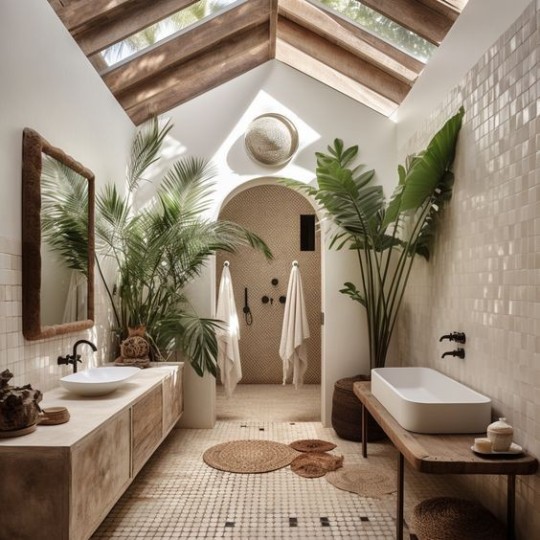
hey lovelies 💚
today bringing our beautiful plants, aren't they lovely?
our indoor gardens give much good, vitality and peace.
beautiful diverse plants we have, have healing properties for ourselves, our homes and our lives.
a literal piece of caring, loving and sweetness that can look at in the various parts of our days and daily routine.
some of our healing plants :
° areca palm - purifies irritations, brings stability, grounding and beauty
° spider plant - cleansing, pure air, easy breathing
° orchid - healing, increases self-esteem and care for self, feminine energy (one way why usually gift women orchids to show care, affection and to celebrate or congratulate), celebrates feminine life
° lavender - peace and love for the present
° jasmine - purifies the body, mind and breath, brings higher vibrations and good energy
° gardenia - grounding, soothing, aids digestion and emotional processing
° aloe vera - protects, eases and gives more quality to your sleep, makes you feel good, vital and loved
° english ivy - brings clarity to mind and present, clears and grounds
° boston fern - detox and brings joy
keep a beautiful indoors garden:
° let sunshine in first in the morning, according to the ayurvedic clock, cyrcadian rithm, which one you prefer - your beautiful plants love the sun and so does the sun loves you 💗
° bring in air and wind, let new air flow into your space each day, take in new breath, new energy and new life, your plants have more air nutrients and gases to process into oxygen and you have feel more spacey in life, with more energy for your day
° send love to your plants, say goodmorning to your plants and wish them a good day, know that nurture and care grows and blossoms
° if you have little trees or bonsais, hug them, hugging trees and even delicate plants from afar, give so much to your life, you will feel good
° put on music with your plants that has a harmonious vibe and feel good sparkles, that is relaxing and supports your day
° talk to your plants if you feel you want to, tell them good things, compliments, give them or tell them your lists of gratitude, tell them affirmations - you both grow and have more self-love
a light inviting home
° make your home your space, your energy, your activities, your desires, your needs ° you recharge in your home and you deserve to have a you space that is lovingly reciprocate to you
° love your home and love you in it
° create good routines, put "you" decorations
° fulfill your decor and usefulness needs as often
° have laughing moments and joyful moments in your home
° invite good people in your home and feel satisfied with their presence, choosing your right companions and mates
° make sure to create moments that give you joy, recharging, music, beauty, movement, expression, art, talk, connection, hobbies, dedication, all of what you need in your life in your space
° get good fashion around, that fulfills your visual needs
° move things around for comfort, get material around that gives you nurture, comfort, self-soothes
° compliment your neighbours from afar at times, and lovingly be playful with kids around, maybe have them in for a little while. happy kids time gives good time.
° be you at home, "more than anyone else", you deserve to be you in your space, and you can create safety around that
creating good memories in your home pays off and gives more to you
quote of the day
"you are so much more than you think you are"

love babies 💚
#nature#garden#flowers#self love#trees#aesthetics#home aesthetic#gardening#green juice aesthetic#cute#vintage#pink#green juice girl#wellness#sweetness#harmony#good habits#routines#invest in yourself#life#lifestyle#personal development
6 notes
·
View notes
Text
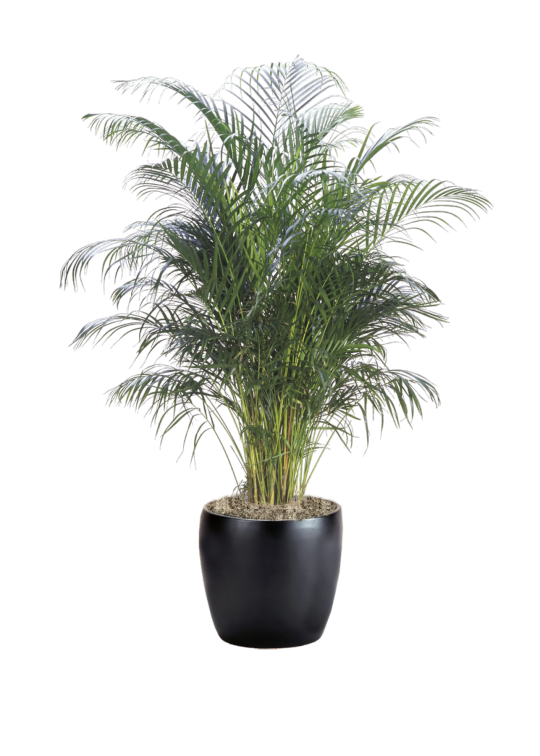
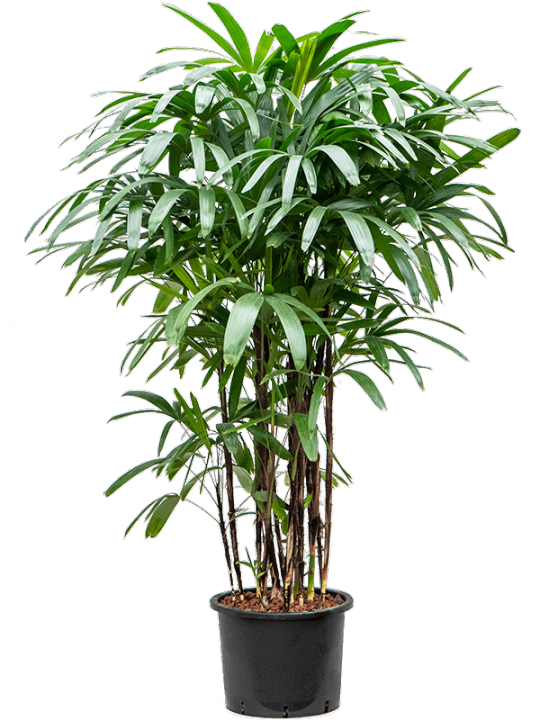
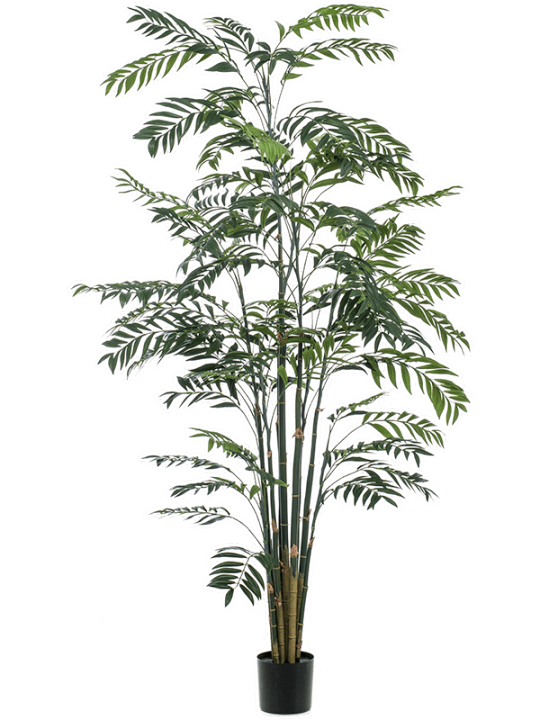




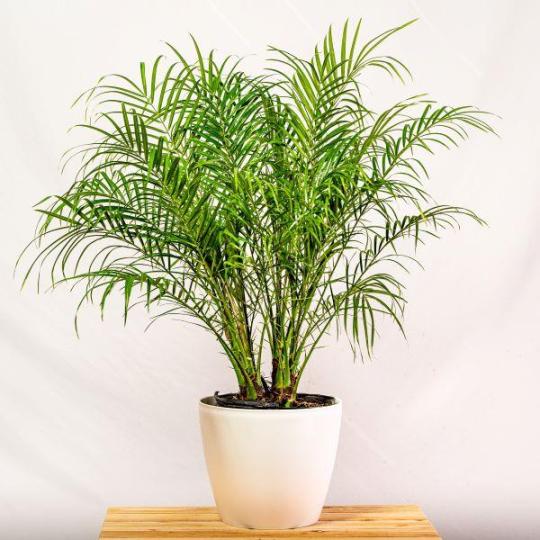
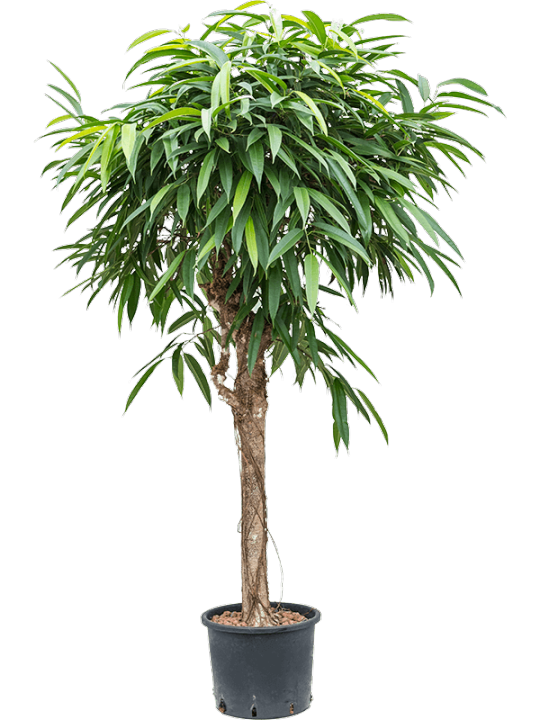
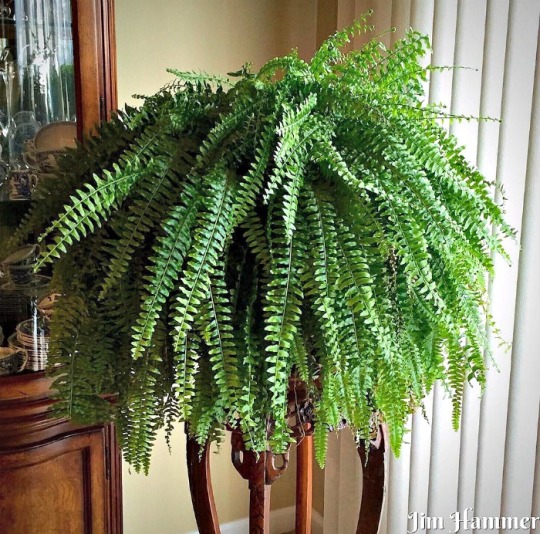
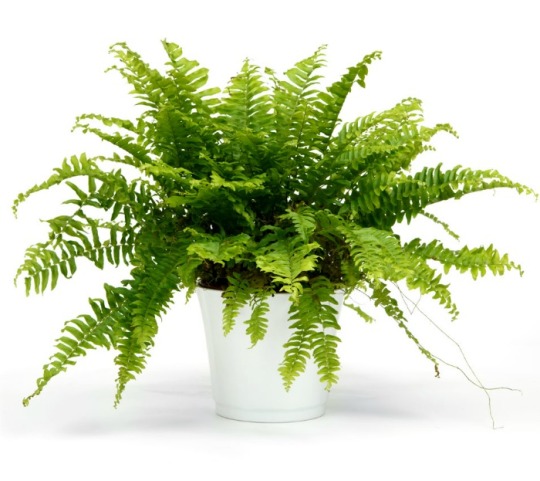

Areca Palm ranked as the top air purifying plant. This plant, dubbed “the most efficient air humidifier”, can literally replace the need for electric humidifiers altogether. It has been proven to keep the home or office moist even during dry times and continuously removes chemical toxins from the air. Lady Palm achieved the same high score for its humidifying and air cleaning effectiveness, as well as being resistant to most types of plant insects. Rhapis excelsa (Lady Palm) Bamboo Palm scored just a notch below the two top air purifying palms. The Bamboo palm thrives when kept moist (but not wet) in indirect sunlight. Rubber Plant was fourth on NASA’s scoring scale. This plant particularly excels at removing formaldehyde and requires less light than its counterparts. (Note: Rubber plant leaves can be toxic if ingested by pets or children) Ficus burgundy or Rubber Plant Dracaena also called “Janet Craig” will start purifying the air as soon as it is brought into a room. Dracaena fragrans Dragon Tree English Ivy has been called “a fix for allergies“. It has been acclaimed for eliminating 60% of airborne mold in a room in just 6 hours. Allergy and asthma suffers would do well to give English ivy a try! Date Palm Tree, while not as effective as its other palm cousins, is still very effective in lowering the concentration of chemical toxins floating around in the air. Ficus Alii is not as potent in its toxin-removing prowess, but still came in 8th on NASA’s list of air cleaners. Boston Fern has been called the “most efficient filtering plant” for its time-tested ability to expel mold and toxins from indoor air. The Boston fern is considered one of the lucky plants. It is thought to purify the air and this helps to create a sense of positivity in any room. https://thegardeningcook.com/care-of-boston-fern/ Peace Lilly rounds out NASA’s list. Keep this beautiful indoor air toxin killer healthy with plenty of water and modest amount of sunlight.
youtube
12 NASA recommended air-purifying plants that you must have in your house
2 notes
·
View notes
Text
Some Natural Ways to Keep Your House Cool during the Summers
Beginning to totally depend on air conditioning to cope with the blisterian summer heat isn't unique. Based on reliable sources, India's usage of the cooling method with forecasting records of 2023 indicate a substantial rise because of the situation surrounding our quicker-than-usual altering environment. Fortunately there are still choices that enable us to preserve our houses pleasantly when maintaining some form of eco friendliness. Here are a few recommendations which may save some money as well as align with nature simultaneously as you construct .
1. Keep the ventilation open

For optimal ventilation, open multiple windows from 5 a.m. until 8 a.m. and then again from 8 p.m until 10 p.m., periods in which the air tends to be both pleasant and beneficial for air exchange with outside temperatures dropping in the nighttime hours of summer months -but remember to place appropriate mesh colonies on and around doors and windows frames into heat out annoying and disease-carrying bugs such as mosquitoes.
2.Blinds should be installed

Windows can create an intense warmth inside your structure if the sun beats on it. It is sensible to cover up your windows and stop the daylight by setting up window blinds. Close all the blinds in your room from 11 AM to 4 PM. Invest in breathable and resilient substances such as jute mesh or bamboo zephyrs. Don't select darker colours, instead go for tints of white hue or gentle pastels. If you plan to venture out somewhere.

3: Choose natural fabrics
If you have ever had the misfortune of sitting on a leather couch during a hot, humid summer, you may have noticed how uncomfortable the material can be against the skin. Fabrics like silk, satin and polyester are excellent at retaining heat, so look to wool and cotton when picking out linen and upholstery for your furniture that want lightness, breathability and allow for more airflow. These materials will not just make a room visually brighter; they also make it much more comfortable.

4: Make use of cool colors
During the parched summer, painting your house is an agreed-upon option. Opting for an inconspicuous pastel colour such as yellow, aqua, pink, beige or white will last after beyond then season. Also assessing any possible wall injury born due to change of season like monsoon ought to be examined first with the aid of some knowledgeable experts in usage of external protection companies like Bangor's All Weather Guard adhesion against variability as caused by elements.
5: Your roof needs to be treated
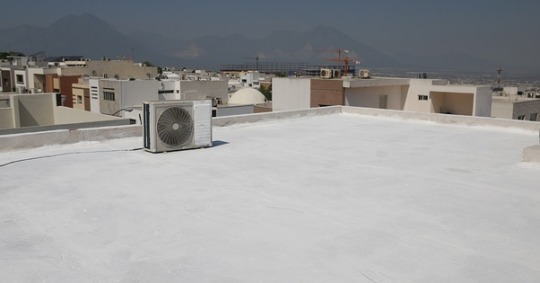
Overlaying your roof with a UV obstacle provides cool respite in the dwellings due to a few degrees difference it makes. Roof Guard by Weather Coat is one solution as it is pertinent for aquatic optimization and contains adornment efficiency function with a good surface further recognizing name (SRI) class display cool components. This coating barricades lampheaded ultraviolet photons, agreeing moderate content envelop expenses and shrink pathetical damage.

6: Paint your walls smartly
When examining your roof, think about innovative insulation possibilities for the walls. Having better heat complementation will aid in decreasing the temperature of your house under severe conditions. Ever wondered why light-toned clothing is recommended during hot weather? At its core lies a physical explanation: light tones replicate and darker hues comprises of this radiant energy received from outside, which leads to faster elevation of indoor air temperature. People who dwell in extreme temperatures should integrate white and gentle colours on their walls and keep away from heat.

7: Bring greenery into your home
The areca palm tree, aloe vera, and ferns can be highly effective at purifying allergens and subsequently 2 cooling the area due to their decorative appeal in any indoor environment. Strategically planting trees on the east and west sides of dur walls is another feasible option that will mitigate heat. Another temperature moderating idea or solution includes cultivating creepers on your balcony protection guards or interior room partitions.
8: Lights that use less energy
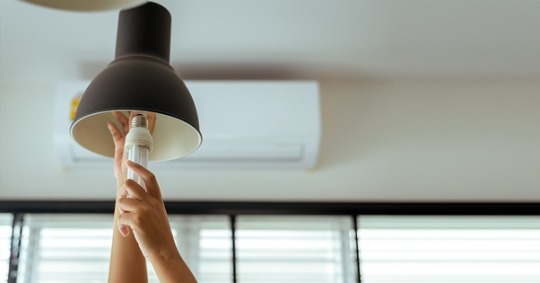
Using energy efficient lighting, such as LED or CFL fixtures, in frequently used spaces and turning off lights when not in use can help save energy and lead to an overall decrease in home heating. Additionally, unplugging electronics while they are idle will reduce the amount of energy they generate in the form of heat. It is possible to comfortably live inside with limited air conditioning when warm weather comes if these natural cooling strategies are utilized; a move which both saves money and works towards decreasing the effects that reduce global warming.
Paint Sutra - Wall Painting House Painting
We provide best Wall Painting Services for your sweet home. We do Wall Painting at a reasonable cost. Get free quotation and get in touch on 9700 22 6666.
4 notes
·
View notes
Text
Embrace the Sun: Find the Perfect Spot for Your Areca Palm Tree in Florida
Discover the ideal balance of sunlight and shade to ensure your Areca palm thrives and becomes the focal point of your Florida landscape.
0 notes
Text
https://blog.nationbloom.com/list-of-plants-that-make-oxygen-at-night/
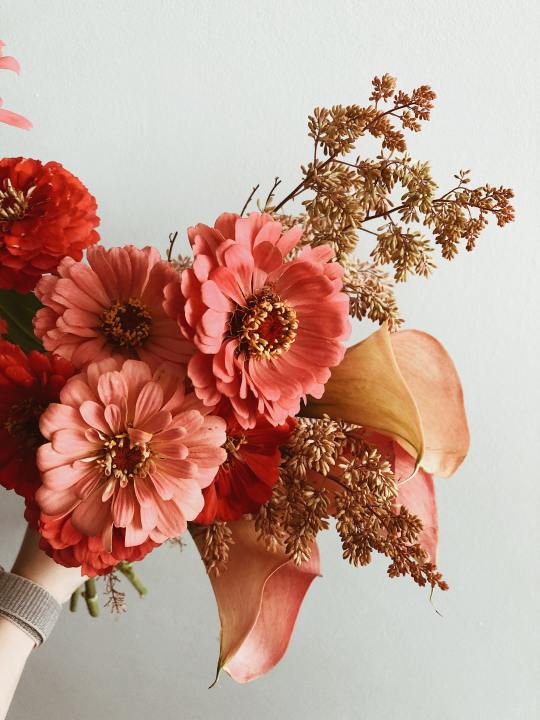
Plants are a natural source of oxygen, and they play a crucial role in maintaining the balance of our ecosystem. During the daytime, plants produce oxygen through a process called photosynthesis, where they convert carbon dioxide and sunlight into oxygen and glucose. However, many people are unaware that some plants can also produce oxygen at night. These plants are also known as “oxygen-generating” plants or “oxygen-producing” plants.
Here’s a list of plants that produce oxygen at night:
Snake Plant (Sansevieria Trifasciata)
The Snake Plant, also known as Mother-In-Law’s Tongue, is a popular indoor plant that can survive in low-light and drought conditions. It has a unique ability to produce oxygen even at night, making it an ideal plant for bedrooms.
Aloe Vera (Aloe Vera)
Aloe Vera is a succulent plant that is widely known for its medicinal properties. It also produces oxygen at night, making it a great plant for indoor air purification.
Areca Palm (Dypsis Lutescens)
The Areca Palm is a tropical plant that can grow up to 6-7 feet tall. It is a natural humidifier and also releases oxygen at night, making it a great plant for improving air quality indoors.
Spider Plant (Chlorophytum Comosum)
The Spider Plant is a popular indoor plant that is easy to grow and maintain. It is known for its air-purifying properties and can also produce oxygen at night, making it a great plant for improving indoor air quality.
Peace Lily (Spathiphyllum)
The Peace Lily is a beautiful indoor plant that can survive in low-light conditions. It is known for its ability to remove toxins from the air and can also produce oxygen at night, making it a great plant for improving indoor air quality.
Gerbera Daisy (Gerbera Jamesonii)
The Gerbera Daisy is a colorful and vibrant indoor plant that is known for its ability to produce oxygen at night. It is also known for its air-purifying properties and can help remove harmful chemicals from the air.
Golden Pothos (Epipremnum Aureum)
The Golden Pothos is a popular indoor plant that is easy to grow and maintain. It is known for its air-purifying properties and can also produce oxygen at night, making it a great plant for improving indoor air quality.
Bamboo Palm (Chamaedorea Seifrizii)
The Bamboo Palm is a tropical plant that can grow up to 12 feet tall. It is known for its ability to remove toxins from the air and can also produce oxygen at night, making it a great plant for improving indoor air quality.
Rubber Plant (Ficus Elastica)
The Rubber Plant is a popular indoor plant that is known for its air-purifying properties. It can also produce oxygen at night, making it a great plant for improving indoor air quality.
Peepal Tree (Ficus Religiosa)
Peepal Tree, also known as the sacred fig, is an evergreen tree that is considered sacred in many cultures. It is known for its ability to produce oxygen even at night, making it an ideal plant for improving air quality indoors.
Source-https://blog.nationbloom.com/list-of-plants-that-make-oxygen-at-night/
2 notes
·
View notes
Text
Seasonal Plantscape Guide for Boca Raton Gardens
Boca Raton, Florida, with its warm climate and coastal charm, offers a fantastic environment for creating stunning seasonal gardens year-round. Whether you're a seasoned gardener or just starting, understanding which plants thrive during different seasons will help you maintain a lush and vibrant landscape throughout the year. With mild winters, hot summers, and abundant sunshine, Boca Raton provides the perfect setting to enjoy a diverse range of plants that suit the region's unique climate.
Understanding Boca Raton's Climate
Before diving into plant selections, it’s important to understand Boca Raton’s climate and growing conditions. The region falls within USDA Hardiness Zone 10, which means:
Warm, humid summers with temperatures reaching the high 80s and 90s.
Mild winters with occasional dips but rarely freezing temperatures.
Well-draining, sandy soils that often need organic amendments for optimal plant health.
Seasonal rainfall patterns, with wetter summers and drier winters.
With these factors in mind, let's explore the best plants for each season to keep your Boca Raton garden thriving year-round.
Spring Plantscape Ideas
Spring in Boca Raton brings ideal growing conditions with moderate temperatures and increasing rainfall. It’s a great time to refresh your garden with vibrant colors and lush foliage.
Best Spring Plants for Boca Raton:
Bougainvillea: This hardy, drought-tolerant vine bursts into a riot of pink, red, and purple blooms in spring, adding a tropical touch to your landscape.
Hibiscus: These large, showy flowers provide instant impact and attract hummingbirds and butterflies.
Gardenia: Known for its fragrant white blooms and glossy green leaves, gardenia thrives in Boca Raton’s warm spring climate.
Petunias: Perfect for garden beds and containers, petunias come in various colors and provide long-lasting blooms throughout the season.
Crown of Thorns: A low-maintenance succulent with bright red or pink flowers that can handle the heat as spring progresses.
Spring Gardening Tips:
Start fertilizing plants with balanced nutrients to encourage new growth.
Add mulch to retain soil moisture and reduce weeds.
Prune winter-damaged branches to encourage healthy development.
Summer Plantscape Guide
Summers in Boca Raton are hot and humid, making it essential to select heat-tolerant plants that can handle intense sun exposure and occasional heavy rains.
Best Summer Plants for Boca Raton:
Plumeria: Known for their fragrant flowers and tropical appeal, plumeria thrives in the heat and requires minimal watering.
Lantana: These hardy, drought-resistant flowers attract butterflies and add vibrant color even during the hottest months.
Palms: Varieties like the Areca Palm and Sabal Palm add shade and structure to your summer garden.
Coleus: With colorful foliage in shades of red, green, and purple, coleus can brighten up shady spots.
Zinnias: These cheerful annuals are heat-tolerant and come in a variety of bright colors.
Summer Gardening Tips:
Water plants early in the morning to minimize evaporation.
Ensure good airflow around plants to prevent fungal diseases.
Consider adding shade structures or planting taller trees to protect sensitive plants.
Fall Plantscape Planning
Fall in Boca Raton is a transition period with cooler temperatures and reduced humidity, making it a perfect time for planting hardy flowers and vegetables.
Best Fall Plants for Boca Raton:
Marigolds: These cheerful flowers are heat-tolerant and bloom well into the fall season.
Chrysanthemums: Perfect for autumn landscapes, mums come in warm colors that complement the fall season.
Crotons: Their colorful, variegated foliage adds warmth and vibrancy to fall gardens.
Snapdragons: Ideal for cooler temperatures, snapdragons add vertical interest and bright colors.
Herbs like basil, mint, and thyme: The cooler weather makes it easier to grow fresh herbs for your kitchen.
Fall Gardening Tips:
Begin planting cooler-weather vegetables like lettuce and kale.
Prune back overgrown summer plants to encourage fresh growth.
Add compost to enrich the soil before winter.
Winter Plantscape Selection
Winter in Boca Raton is mild, allowing for continued gardening with certain plants that can tolerate cooler evenings while still thriving in the daytime warmth.
Best Winter Plants for Boca Raton:
Poinsettias: Known for their festive red and green foliage, poinsettias are a great addition to winter landscapes.
Begonias: These versatile plants provide color and work well in shaded garden areas.
Impatiens: Perfect for adding bright pops of color in winter gardens.
Ornamental Kale and Cabbage: These hardy plants add unique textures and colors to winter gardens.
Camellias: Their beautiful blooms add charm and elegance during the cooler months.
Winter Gardening Tips:
Protect sensitive plants from occasional cold snaps with frost cloth.
Reduce watering as plant growth slows during the cooler season.
Continue weeding and mulching to maintain healthy soil.
Designing a Year-Round Plantscape
Creating a year-round plantscape in Boca Raton involves careful planning and selecting a mix of perennials, annuals, and shrubs that provide interest in every season. Consider incorporating:
Native plants that thrive in Boca Raton’s climate with minimal maintenance.
Drought-tolerant varieties to reduce water usage during dry seasons.
Colorful combinations that change with the seasons for continuous visual appeal.
Layering techniques, such as tall palms with understory shrubs and ground covers.
Conclusion
With its year-round growing potential, Boca Raton offers endless opportunities to create a stunning seasonal plantscape. By selecting the right plants for each season and following essential gardening tips, you can enjoy a thriving and colorful garden that enhances your outdoor space. Whether you're drawn to vibrant tropical flowers, lush greenery, or low-maintenance native plants, there's something for every gardening enthusiast in Boca Raton.
So, grab your gardening tools, get inspired, and start planning your perfect seasonal garden today!
0 notes
Text
The Flourishing Business of Plant Selling in Uttar Pradesh: A Guide for Aspiring Entrepreneurs

Uttar Pradesh, with its rich culture, diverse landscapes, and historical significance, is also home to a growing plant market that has blossomed in recent years. The demand for plants, both decorative and functional, has surged across the state, thanks to a heightened awareness of environmental sustainability and the beauty of nature. In this blog, we will explore the plant selling business in Uttar Pradesh, including the market dynamics, key players, challenges, and strategies for aspiring entrepreneurs who wish to tap into this flourishing market.
1. The Growing Popularity of Plants in Uttar Pradesh
Over the past decade, there has been a growing trend in urban areas where people are increasingly incorporating plants into their homes, offices, and gardens. This trend has been particularly noticeable in major cities like Lucknow, Kanpur, Agra, and Varanasi. People have begun to recognize the benefits of plants—not only for decoration but also for their role in improving air quality, enhancing mood, and promoting a healthier living environment.
2. Types of Plants in Demand
The plant selling business in Uttar Pradesh caters to a wide range of customers with varying needs. Some of the popular categories of plants in demand are:
Ornamental Plants: Plants like succulents, cacti, flowering plants (e.g., roses, orchids, lilies), and indoor decorative plants (e.g., peace lily, snake plant, spider plant) are highly sought after for interior decoration and aesthetic purposes.
Indoor Plants: With the rise in apartment living and small-space gardening, indoor plants such as money plants, pothos, and aloe vera are increasingly in demand.
Fruit and Vegetable Plants: Urban farming is gaining popularity, and people are looking for fruit-bearing plants like tomato, chili, and lemon trees, as well as vegetable plants such as spinach, coriander, and mint.
Medicinal and Herbal Plants: There is a significant interest in herbal plants like tulsi, aloe vera, and neem, which are valued for their therapeutic and medicinal benefits.
Outdoor Plants: Large gardens and terrace gardens in homes and commercial spaces have led to the demand for flowering bushes, ornamental trees, and hedge plants.
Air-Purifying Plants: Plants that help clean the air, like the areca palm, aloe vera, and English ivy, are especially popular among health-conscious individuals.
3. Market Dynamics and Customer Trends
Urbanization and Limited Space: Urbanization in cities like Lucknow, Kanpur, and Varanasi has led to an increase in apartment living and small garden spaces. As a result, compact plants, balcony plants, and indoor gardening solutions have become popular.
Environmental Awareness: As environmental consciousness rises, people are investing more in plants that contribute to a cleaner environment and promote sustainable living. This has led to an increase in sales of organic plants, air-purifying plants, and plants used for making eco-friendly products.
Social Media Influence: The power of social media, particularly platforms like Instagram and Pinterest, has fueled the desire for aesthetically pleasing plant arrangements, promoting the plant-selling business. Gardening influencers and bloggers often highlight creative ways to incorporate plants into everyday life, further boosting the popularity of plant sales.
Local Markets vs. Online Selling: While local markets in Uttar Pradesh continue to be a significant source of plant buying and selling, the advent of e-commerce has transformed the way plants are sold. Many entrepreneurs are now establishing online platforms, offering home delivery of plants across the state.
4. Key Players in the Uttar Pradesh Plant Market
There are various local nurseries and plant sellers operating in Uttar Pradesh, each offering a unique range of plants and services. These sellers include:
Local Nurseries: Uttar Pradesh has a large number of local nurseries in both urban and rural areas, such as the famous plants markets in Lucknow, Agra, and Kanpur. These nurseries provide an array of plants, gardening supplies, and expertise to help people with their plant care needs.
Online Platforms: Online sellers like Ugaoo, Nurserylive, and MyBageecha have also gained traction in Uttar Pradesh, allowing customers to order plants from the comfort of their homes. These platforms often provide home delivery, plant care tips, and even plant subscription services.
Farming Communities: Many farmers in rural Uttar Pradesh are now turning to the business of selling plants, especially fruit and vegetable plants. These sellers often have direct access to seeds, saplings, and healthy plants at competitive prices.
5. Challenges in the Plant Selling Business
Despite the positive growth in the plant selling business, there are several challenges that plant sellers in Uttar Pradesh face:
Climate Variability: The diverse climate conditions across Uttar Pradesh—from the hot, dry areas in the western part to the humid, fertile plains in the eastern regions—make it difficult for some plant species to thrive. Sellers must carefully choose plant varieties that are suited to the local climate.
Transport and Delivery Issues: As the demand for plants rises, the logistics of delivering plants, especially fragile ones, become crucial. Plants need to be handled carefully to prevent damage during transit. This requires investing in packaging materials and ensuring efficient delivery systems.
Pests and Diseases: The plant industry is susceptible to pests and diseases that can quickly affect large quantities of plants. Sellers need to adopt organic and chemical-free pest control methods to ensure plant health and prevent loss of inventory.
High Competition: With the rise of online plant sellers and local nurseries, competition in the plant market has become intense. Sellers must find ways to stand out, such as offering personalized plant care advice, special offers, or rare plant varieties.
6. Strategies for Aspiring Entrepreneurs in the Plant Selling Business
If you’re considering entering the plant-selling business in Uttar Pradesh, here are some strategies to help you succeed:
Identify Your Niche: Specialize in a particular category of plants, such as air-purifying plants, medicinal plants, or exotic plants, to differentiate your business from competitors. This will help you target specific customer segments.
Establish an Online Presence: With the growing trend of online shopping, it is essential to set up an e-commerce platform or leverage online marketplaces. Create a website or a social media page where customers can browse plant varieties, get care tips, and place orders.
Offer Home Delivery: People prefer the convenience of having plants delivered to their doorstep. By offering home delivery services, especially in urban areas, you can expand your customer base and enhance the overall shopping experience.
Provide Plant Care Guidance: Many plant buyers are beginners, and they need guidance on how to take care of their new plants. Offering free advice on watering, sunlight requirements, and pest control will build trust and customer loyalty.
Participate in Local Fairs and Markets: Participating in gardening fairs, farmer’s markets, and exhibitions in cities like Lucknow, Kanpur, and Agra will help you connect with a larger audience and build brand recognition.
Educate Customers: Use platforms like social media or your website to educate customers about the benefits of plants, new trends in indoor gardening, and sustainable gardening practices. Offering tutorials and videos can create more engagement.
7. Conclusion
The plant-selling business in Uttar Pradesh is a blooming industry with vast potential for growth. With the right strategies, a passion for plants, and a keen understanding of local market dynamics, aspiring entrepreneurs can make a significant mark in this field. By identifying customer preferences, offering quality products, and providing exceptional customer service, the plant business in Uttar Pradesh has the opportunity to thrive in the years to come. Whether you’re an online plant seller, a local nursery owner, or a hobbyist-turned-entrepreneur, there are ample opportunities to grow your business and contribute to the green revolution in Uttar Pradesh.
Contact Us
Address: Nawada road, Gajraula, Chhoya, Uttar Pradesh 244235
Phone: 8979263236
Email: [email protected]
Website: https://greenworldnurseryandlandscapes.co.in/
Visit us today and explore our wide range of plants, products, and services. Let’s work together to create beautiful, sustainable green spaces that inspire and rejuvenate.
0 notes
Text
The Evolution of Disposable Plates: From Plastic to Eco-Friendly Alternatives

Disposable plates have been a staple of convenience for decades, making them an essential item for picnics, parties, and large events. Over time, however, the environmental impact of traditional disposable plates, primarily made from plastic, has prompted innovation in materials and designs. Today, eco-friendly alternatives are transforming the industry, offering sustainable options that align with modern environmental consciousness.
The Early Days of Disposable Plates
The journey of disposable plates began with paper plates in the late 19th century. Initially designed for sanitation in hospitals and public health contexts, paper plates were an ingenious invention for single-use purposes.
However, as plastic manufacturing advanced in the mid-20th century, disposable plates became more durable, water-resistant, and lightweight. This shift made plastic disposable plates a global sensation, celebrated for their convenience and affordability.
The Rise of Environmental Concerns
Despite their practicality, plastic disposable plates have posed significant environmental challenges. Being non-biodegradable, these plates often end up in landfills or pollute oceans, contributing to the global plastic waste crisis. Their manufacturing processes are also energy-intensive, further exacerbating their ecological footprint.
Public awareness of these issues grew in the late 20th and early 21st centuries, leading to a demand for sustainable solutions. Governments and environmental organizations began advocating for reduced plastic use, and businesses recognized the need for alternatives.
Eco-Friendly Alternatives Take the Stage
The quest for greener solutions has driven innovation in disposable plate manufacturing. Here are some of the most notable eco-friendly alternatives:
1. Bagasse Plates
Made from the fibrous residue of sugarcane after juice extraction, bagasse plates are biodegradable and compostable. These plates are sturdy, heat-resistant, and an excellent substitute for plastic.
2. Bamboo Plates
Bamboo, a fast-growing and renewable resource, is another popular material for disposable plates. Bamboo plates are durable, naturally biodegradable, and aesthetically pleasing.
3. Palm Leaf Plates
Palm leaf plates are crafted from fallen leaves of the Areca palm tree, making them 100% natural. Each plate has a unique texture and pattern, offering a rustic charm to any table setting.
4. Recycled Paper Plates
Recycled paper plates are a simple yet effective alternative, reducing the demand for virgin paper and minimizing waste. These plates are often coated with eco-friendly layers to improve durability and water resistance.
Benefits of Eco-Friendly Disposable Plates
Switching to eco-friendly disposable plates offers numerous advantages:
Environmental Impact: These plates decompose naturally, reducing landfill waste and pollution.
Renewable Resources: Most eco-friendly plates are made from sustainable materials like sugarcane, bamboo, and palm leaves.
Consumer Appeal: Businesses that adopt eco-friendly plates demonstrate environmental responsibility, which resonates with eco-conscious consumers.
Challenges and Future Innovations
While eco-friendly disposable plates are a step forward, they come with challenges such as higher production costs and limited availability in some regions. However, ongoing advancements in manufacturing technologies and material science are expected to address these issues, making these plates more affordable and accessible.
Conclusion
The evolution of disposable plates reflects a broader shift toward sustainability in everyday products. From the early days of plastic convenience to today’s eco-friendly innovations, the journey highlights the importance of balancing functionality with environmental responsibility. By choosing biodegradable and compostable options, we can reduce waste and make a positive impact on the planet.
Switching to eco-friendly disposable plates isn’t just a trend—it’s a necessity for a sustainable future. As individuals and businesses, adopting these alternatives ensures we play our part in protecting the environment for generations to come.
0 notes